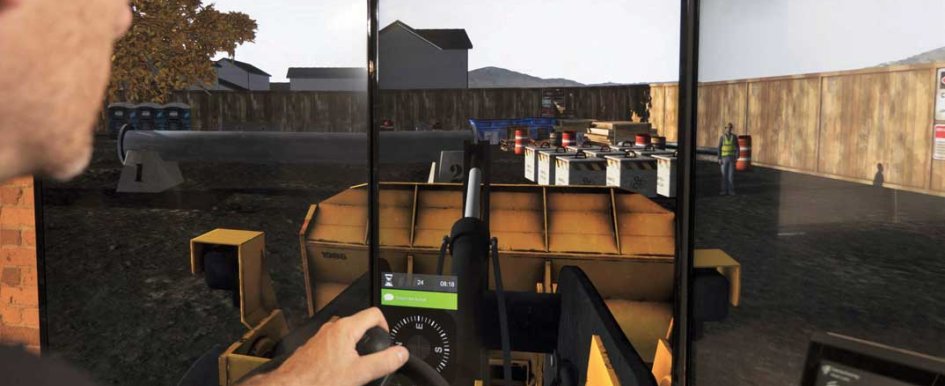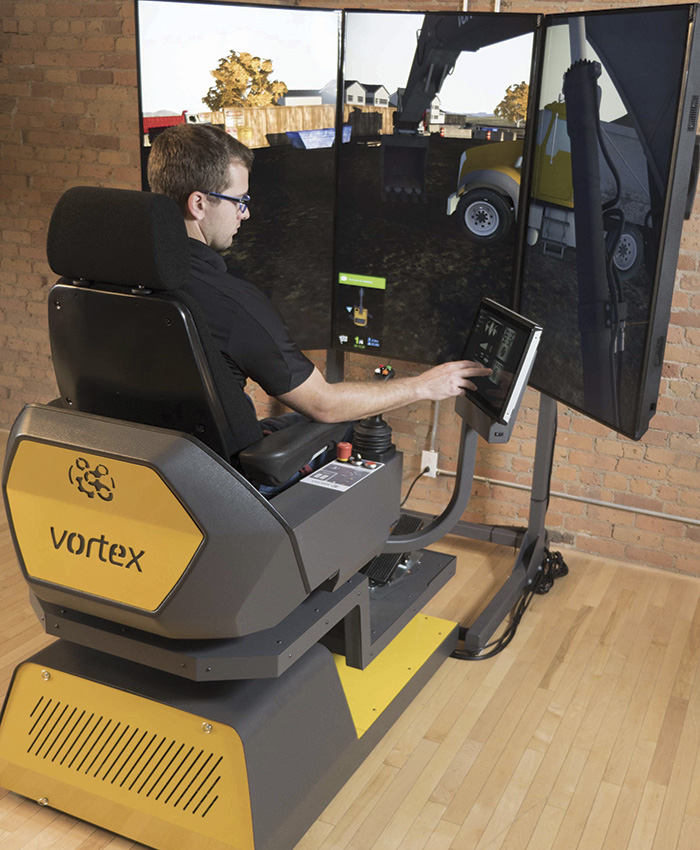
Jeff is a crane operator working out of Detroit, Michigan. Thirty years ago, he learned how to operate heavy equipment the same way every other operator did: on the job. “I remember starting out in a 20-ton crane years and years ago,” he said. “I didn’t know what I was doing—alarms were going off; I was hitting override buttons—I’m lucky to be alive.”
This kind of story gets told all over the industry. For operators of a certain era, on-the-job training was simply how things were done. But times have changed. Safety is taken more seriously now. In the past, a proactive safety culture might have been seen as a necessary evil, but now it is widely understood that strong health and safety measures are just plain good for business, resulting in cost savings, improved worksite morale and more satisfied clients.
From that point of view, on-the-job training is just not practicable: it’s dangerous; it’s hard on the machines; and it often means that equipment, as well as experienced operators, are taken out of production.
Down-to-Earth Technology
It’s only in the last 10 years or so that any useful alternative to on-the-job training has become available. Although crane simulators have been used for operator training since the mid-1990s, early simulators did not have very realistic graphics, and the simulations of the crane and load dynamics were poor. In addition, training content was limited to basic control familiarization and understanding basic operating procedures.
On the other hand, the defense and aviation sectors have used advanced simulators to train pilots for decades, to the point where it has long been impossible to get or even maintain a pilot’s license without regular simulator training. In recent years, the professional-grade simulation technology that is common in the aviation and defense sectors has come down to earth, so to speak, thanks to a more pervasive construction safety culture, as well as the increasing complexity of cranes and heavy construction equipment.
Now, there are construction crane and heavy equipment simulators that provide the most realistic simulation of machines, whether they are excavating dirt or lifting a load.
Professional-grade crane simulators accurately capture the behavior of rigging and hoisting cables, from the load to the drum, using actual engineering properties. This ensures that they behave appropriately as lines are placed under tension or a load is released. In turn, this means that all loads swing, snag and collide just as they would in the real world, providing valuable experience to students without endangering them or others on the jobsite.
This realism is central to effective training, because it means that simulators can serve as the perfect bridge between classroom theory and actual equipment on the worksite. A simulator that behaves like the real equipment helps trainees develop skills that are directly transferable to the jobsite, with no habits needing to be unlearned, and none of the negative training that is often associated with unrealistic machine responses.
That being said, the barrier to simulator training has traditionally been the cost of the simulators themselves. However, with advances in technology, simulator costs have come down to the point where it is proving more costly to defer simulation training than to adopt it.
Although simulator use has not yet been universally adopted in the industry, businesses that have adopted this technology are already seeing the benefits.
1. Reduced Training Risks
Simulation is used extensively in the aviation industry because the equipment is complex, assets are expensive and consequences can be catastrophic. Compare this with the construction industry, where the equipment is complex, assets are expensive and consequences can
be catastrophic.
With simulation-based training, construction businesses are lowering the risk of damage, injuries and fatalities. Before training even begins, construction crane and heavy equipment simulators can be used to screen trainees and make sure they have the coordination and skills to perform.
During training, trainee progress can be tracked with objective performance metrics and reports, which ensures that any skill deficiency is measured before it becomes a risk in the real machine.
Professional-grade training simulators provide the experience of being there—meaning that they are minimizing the costs and risks of training, while providing an experience that is just like the real thing. This allows trainees to receive the full benefit of acquiring skills without jeopardizing themselves, others, the equipment or the environment.
2. Safer Jobsites
With simulators, trainees can experience operations that might take a lifetime to attain on the job. Simulators can recreate the feel and experience of load shifting, unsafe lifts and other hazards, so that trainees learn to respect the machine before they ever get into the operator’s seat. Trainers can also condition operators to respond to the unexpected by injecting equipment faults or inclement weather into the simulation. This is knowledge that is difficult to teach in a real machine, and it results in operators who are better prepared than they were without simulation, particularly when they have the opportunity to repeatedly practice specialized or difficult maneuvers in a safe, controlled environment.
The realism of the simulation is critical. Otherwise, there is a risk of trainees developing bad habits that will need to be unlearned, or of having overconfident trainees who may work in an unsafe manner. With simulators, you can measure operator performance against unsafe actions, as well as their responses to incidents. Ultimately, the training value of simulators consists in their ability to develop skilled operators who have demonstrated capabilities to execute complex tasks and the confidence required to know when it is time to stop an unsafe lift.

3. Faster Training
Along with reduced accident rates, construction businesses are training faster with simulators. There are a few reasons for this happening. For one thing, a single instructor can simultaneously instruct many trainees, as opposed to one-to-one on the real machine. Trainees also get more seat time, and simulators can run 24/7, in rain, snow and hot weather. Operator training can also be reinforced through after-action review and quantitative measurement of student performance, resulting in more rapid learning and a more effective training process.
It is also possible to conduct team-based training multimachine and multirole simulation, involving signalers and operators working together in a virtual environment. For example, an excavator operator can work on a busy jobsite and even with other simulated machines working around them at the same time, all in a multisimulator collaborative environment that engages the entire crew.
4. Reduced Costs
Using simulators for training lowers equipment fuel costs and reduces wear and tear on expensive equipment. Crane rental and lift companies can keep their fleet in production while operators train on the simulator. In addition to fuel cost savings, simulators can also free up instructors to focus on other higher-value-added tasks because trainees can work their way through simulation exercises at their own pace. It should also be said that simulators are not just for novices. Using simulators to convert an operator from average or below-average productivity to above-average productivity can improve the bottom line. In this scenario, companies can deploy simulators as both a training tool and an operator benchmarking tool by using the simulator’s objective performance metrics to calculate competency scores. Other bottom-line benefits accrue from the use of simulators to rehearse complex operations with the entire team. This improves communication between crew members and increases the likelihood of efficient, profitable operations.
5. Bridging the Skills Gap
Globally, there is a shrinking labor pool of experienced and competent operators due to an aging workforce and pending retirement—and the most obvious drawback of experience is that obtaining it takes a long time. Alternatives are either expensive or infeasible, given the competition for competent operators. To bridge the skills gap, construction businesses are searching for ways to train faster and better. By using simulators as a tool to propagate experience and knowledge, they will find that it is indeed possible to do more with new operators and assure safer, more efficient operations.
